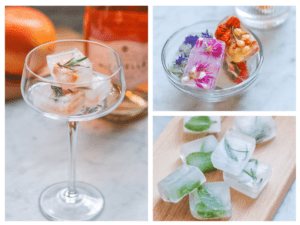This #HardWaterHacks blog series is all about debunking myths and providing practical tips for living with water that’s less softened or using softening alternatives to reduce chloride pollution. Each topic in the series, like this article on clear ice and water, has been researched through the personal experiences of District pollution prevention specialist Catherine Harris as she embraces our naturally mineral-rich area groundwater, works to change social norms on home salt use and reduces chloride pollution in natural systems.
Tips by Catherine Harris; edited by Amy Steger
Every home and business in the Madison area deals with mineral-rich groundwater, or hard water. Did you know that most people live comfortably with hard water without realizing it, as cold water fixtures in kitchens and bathrooms are usually not connected to softened water lines? This is for a couple of reasons: softened water contains sodium, which some people do not like to consume or cook with unintentionally, and cold water doesn’t form scale (mineral deposits from hard water) as easily as hot water so it’s not even necessary.
Devices like blending valves are becoming standard in new home construction and many homeowners are retrofitting their water softeners with these units to help reduce chloride pollution.* Some people are even disconnecting their softeners entirely and finding that having little-to-no salt in their home water lines doesn’t impact day-to-day life much at all. But, living with hard water can bring some unknowns, so we’ve created a series of #HardWaterHacks to help navigate what’s normal and what’s not.
* The treatment plant doesn’t have the technology to remove salt (chloride) from wastewater, so all of the salt that comes into the plant gets sent out to freshwater systems. By reducing salt use at home, we all help protect the freshwater supply.
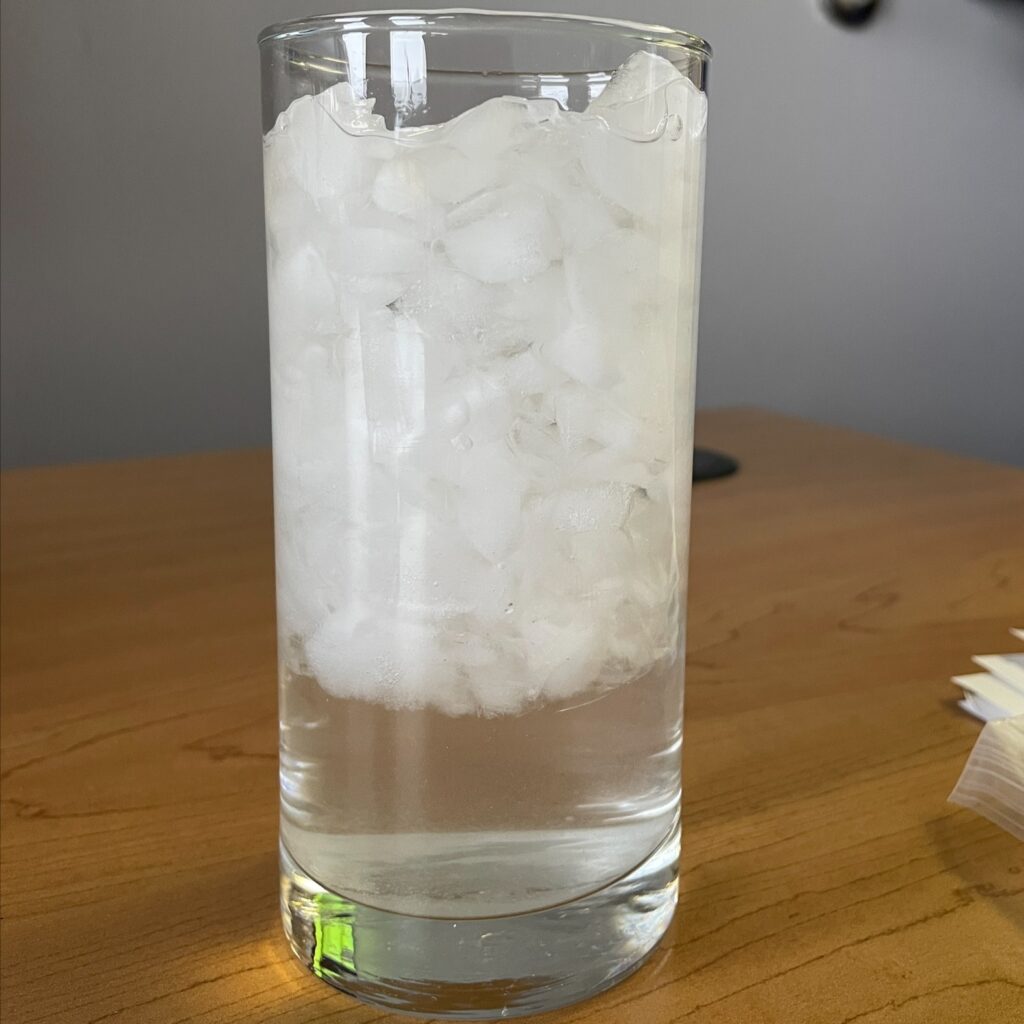
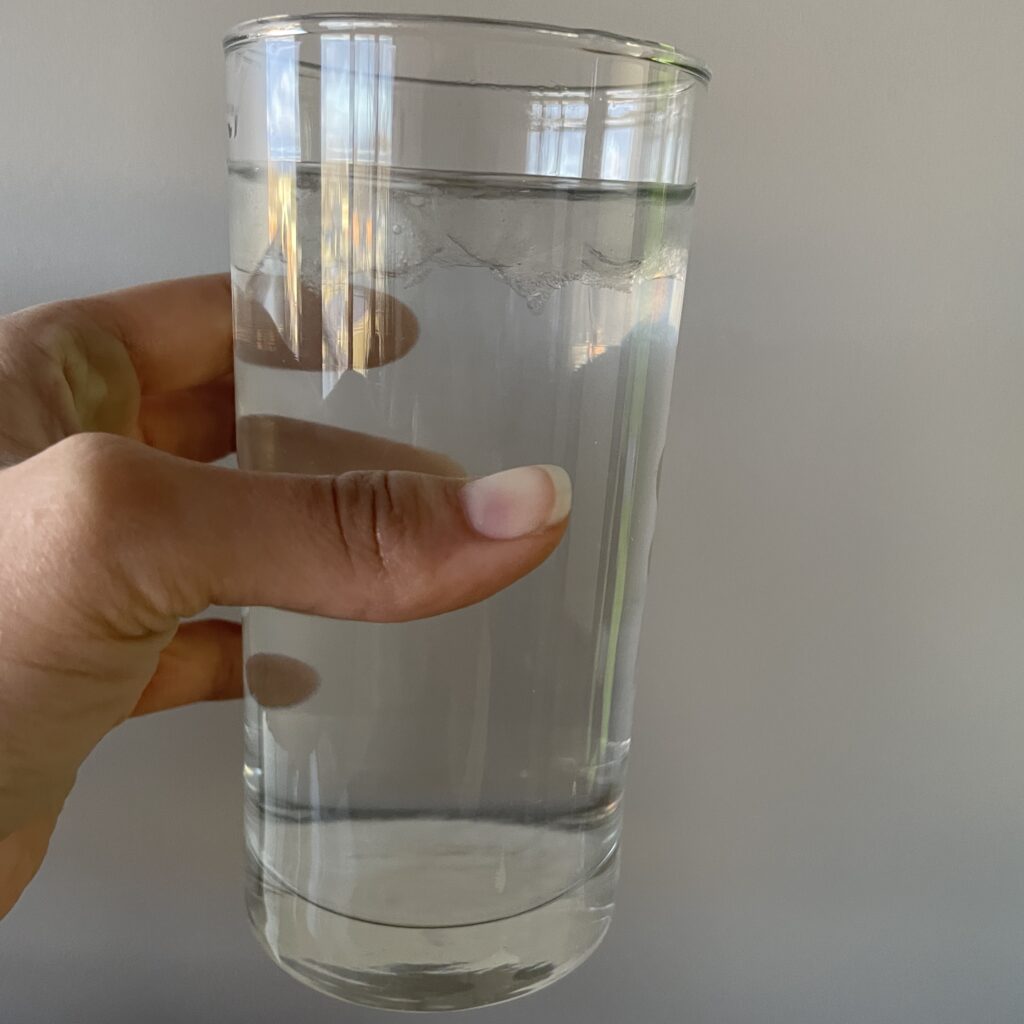
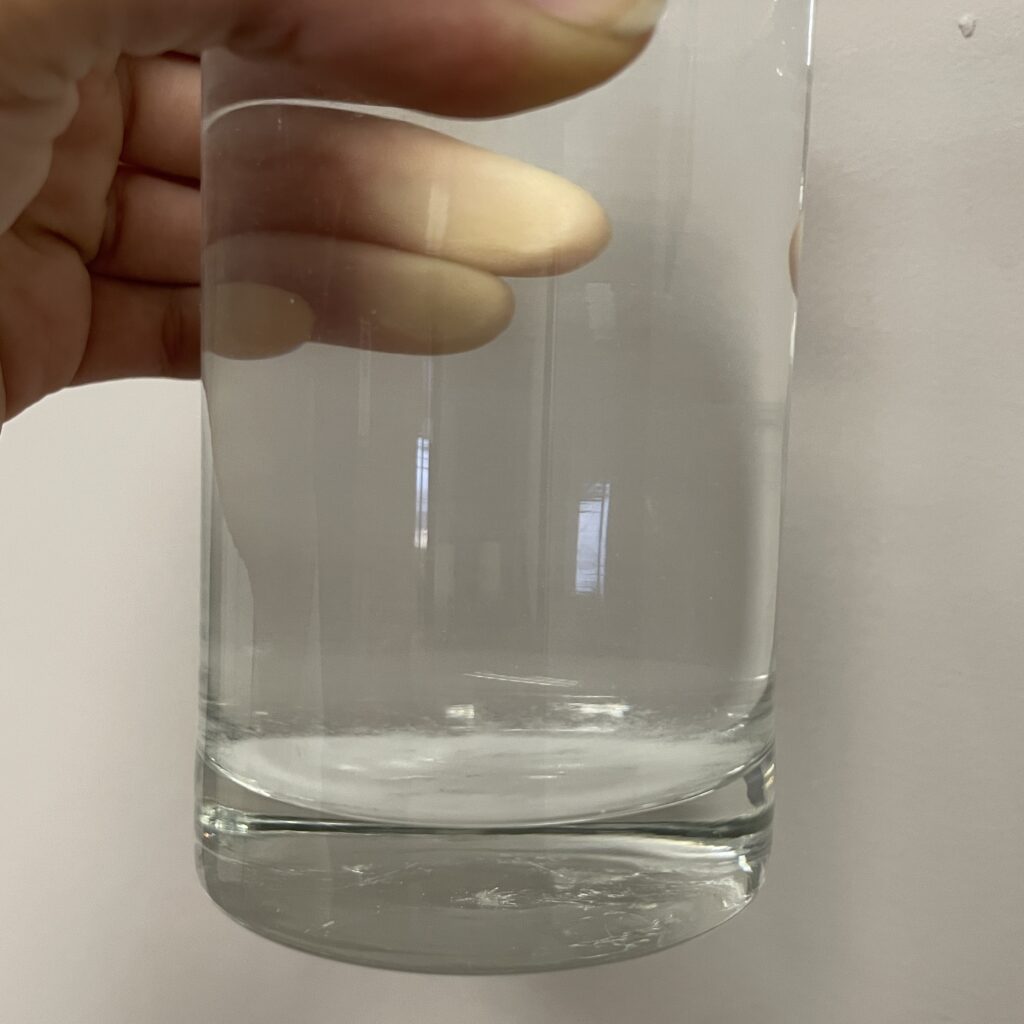
What’s that fuzzy blanket in my water?
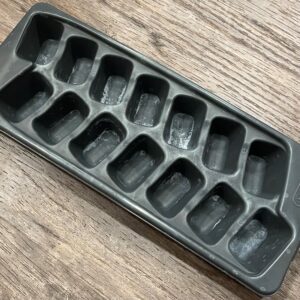
Have you ever noticed little floaties or white flakes in your water, soda or other beverage after the ice cubes melt? How about the film in your ice cube trays? I had never paid any attention to it until a friend visited me and freaked out. I explained why there are floaties in his drink and that they’re completely normal and harmless.
The floaties and flakes have nothing to do with “bad water” or having a dirty ice maker. The floaties that appear after ice has melted are minerals from hard water. Refrigerator ice makers and kitchen faucets used to fill ice cube trays are almost never hooked up to a water softener (so you’re not drinking soft water that has extra sodium or salt).
When you use the ice maker or fill a tray to make ice, you’re using hard water that might leave behind extra minerals that appear white after the ice melts. The minerals are completely safe to consume.
#HardwaterhackS For Clear ice
After my friend’s visit, I figured out a few ‘hacks’ to help make pretty, or crystal clear, ice. Don’t bother with double boiling or using distilled water; neither works to create clear ice.
- Directional freezing: Allow water to freeze into ice from only one direction (ex: top-down or one side of a container). The ice will be clear until the last part to freeze, which remains cloudy. Either remove the ice and pour away the cloudy portion before freezing the rest of the way or cut away the cloudy portion of ice from the clear portion. Using a homemade clear ice cooler can help you accomplish directional freezing.
- Pre-made ice: Buy pre-made ice from a grocery store or gas station and put it in your icemaker.
- Make ice from beverages: Make ice cubes from lemonade, coffee, punch, soda or other flavored liquid you plan to consume.
- Add lemon juice: Adding a few drops of lemon juice can help clear up cloudy ice, but likely won’t make the ice perfectly clear.
- Disguise ice: Make fancy ice cubes by adding garnishes like fruit, herbs or edible flowers to distract from cloudy ice or floaties. Or, take it a step further and make agua frescas!
- Reusable ice cubes: Purchase refreezable, non-diluting ice cubes for your beverages.
Learn more #HardWaterHacks and ways to reduce salt use at home in the Pollution Prevention section of our website or our blog.






